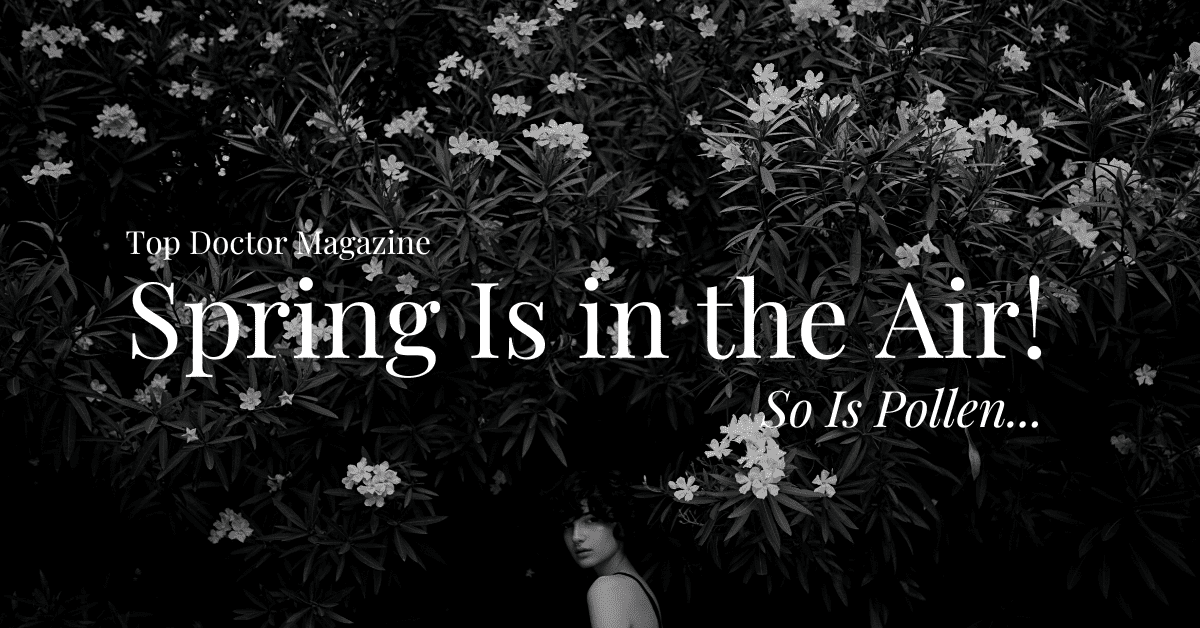~ Benjamin Franklin
There are dozens of online videos of trees flinging massive clouds of yellow-green pollen into the air. Just looking at it will make an allergic person’s eyes itch as they cower in a corner, clinging to a bottle of antihistamine and a box of tissues.
Fortunately, there are doctors in the world like Dr. Priya Bansal, MD, who not only treats your allergies but also puts in the time and effort to establish a relationship with and educate you and your family. She encourages the patient’s active participation in their treatment choices.
“I love working with both adults and children,” she said. “With allergies, you have multiple family members who all see you. So, we work with the whole family.”
Dr. Bansal practices at her Asthma and Allergy Wellness Center in St. Charles, Illinois. An accomplished physician, she was recently elected to the American Academy of Allergy Asthma & Immunology board of directors. She is also on the faculty of Northwestern Feinberg School of Medicine.
Dealing with Spring Allergies
About 20% of people have allergies ranging from mildly annoying to severe and debilitating. As a result, Dr. Bansal typically sees a long list of symptoms as she works with her patients to identify triggers.
“Mainly, we see nasal congestion, sneezing, runny nose, itching, phlegm and postnasal drip. We might also see coughing, wheezing and itchy, watery, red or swollen eyes. Some have skin rashes or irritation, too,” Dr. Bansal explained.
What Causes Allergic Reactions?
The most common spring allergen is pollen from trees and other plants. These tiny particles sometimes travel miles through the air to find other plants to fertilize. Some particles end up in your nose instead of a lovely tree on the other side of town. The immune system decides this means war and sends antibodies to fight the enemy. Unfortunately, this process causes the release of histamines, the culprit behind many of those unpleasant symptoms.
How Are Allergies Diagnosed?
Doctors often test for allergies by applying potential allergens to the surface of or under the skin. If a small red bump forms, there may be an allergy to that allergen. They may also use a blood test. But it’s just as important to talk to the patient.
“I try to focus on talking to them to figure out what the trigger is,” Dr. Bansal said. “Sometimes, when talking about their history, they reveal that trigger. They say, ‘I’m really bad in the spring and fall.’ At that point, I have a suspicion that it might be trees or weeds. But it could be multiple things, so we still do the skin test.”
With results in hand, Dr. Bansal can proceed to treatment, education and prevention measures.
Allergy Treatments
Over-the-Counter Treatment Modalities
You can stand transfixed in a supermarket or drug store and be overwhelmed by the number of available over-the-counter (OTC) medications on the shelves. But if you can manage to find the right one, this is often all you need.
“There are over-the-counter antihistamines, nasal sprays—saline or steroid—that we recommend,” Dr. Bansal said.
- Antihistamines and Decongestants: Antihistamines reduce histamines and the accompanying symptoms. Decongestants reduce the swelling that promotes congestion.
- Nasal Irrigation: Using a neti pot or squeeze bottle, you send a warm saline solution into your sinuses to rinse out allergens and accumulated mucus and remove what is causing the irritation. There is less nose-blowing, so less wear and tear on your sinuses.
Prescription and Stronger Treatment
Sometimes, the OTC treatments aren’t strong enough.
“If patients come in saying, ‘I’ve tried everything. I’m miserable,’ then we may try allergy immunotherapy -sublingual or allergy shots,” Dr. Bantal said.
This immunotherapy reduces your sensitivity to the allergen.
Surgery
If allergies are severe or recur, there may be an underlying medical condition or sinus damage that needs to be fixed.
“These patients may be referred to an otolaryngologist, an ear, nose, and throat doctor. For example, I’ve seen children where they’re turbinates are so swollen. The congestion may come from enlarged adenoids that need to be surgically removed. On the other hand, chronic sinusitis may be worsened to a deviated septum, polyps or other structural problems that require surgery,” she said.
An Ounce of Prevention
Changing Your Environment
Treatment can also involve adjusting your environment to reduce exposure to allergens. This is where the patient can get involved.
“We delve into the patient’s history,” Dr. Bansal said. “Then we talk about avoidance or modification. For example, if dust mites are a problem, I might recommend pillow and mattress covers, washing the sheets in hot water once a week, and running an air purifier all day and night.”
Dr. Bansal recommends preventive environmental changes for spring allergies.
“Close your bedroom windows at night to keep the pollen out. If you’ve spent time outside, take a shower when you come home to wash pollen off,” Dr. Bansal recommended.
You can also monitor your area’s pollen levels online or via television, avoid lawn mowing or gardening, use high-quality filters for your air conditioning or stay inside as much as possible.
Early Intervention
Dr. Bansal emphasizes starting treatment early before spring allergy symptoms pile up.
“Starting your medication two to four weeks in advance can help prevent more severe attacks. During the season, it’s more bearable, and you can take less medicine. You don’t want to start when you’re already miserable. By that point, the cascade of symptoms is already going,” Dr. Bansal explained.
A Parting Reminder
Dr. Bansal considers it her mission to educate her patients to play a critical role in their own health. An informed patient can participate in selecting the best treatment options, change their environment to reduce exposure to allergens and understand and use prevention measures, such as beginning their medication regimen before the official spring allergy season begins.
“I am proud of the relationships that I have established with my patients… I am focused on maintaining their trust and confidence, and I look forward to establishing lasting relationships with every patient I meet,” Dr. Bansal said on her website.
She is excited about the explosion of innovation in the allergy field, but it’s the relationship building and education that matter most. These are the keys to effective prevention and better health.






0 Comments